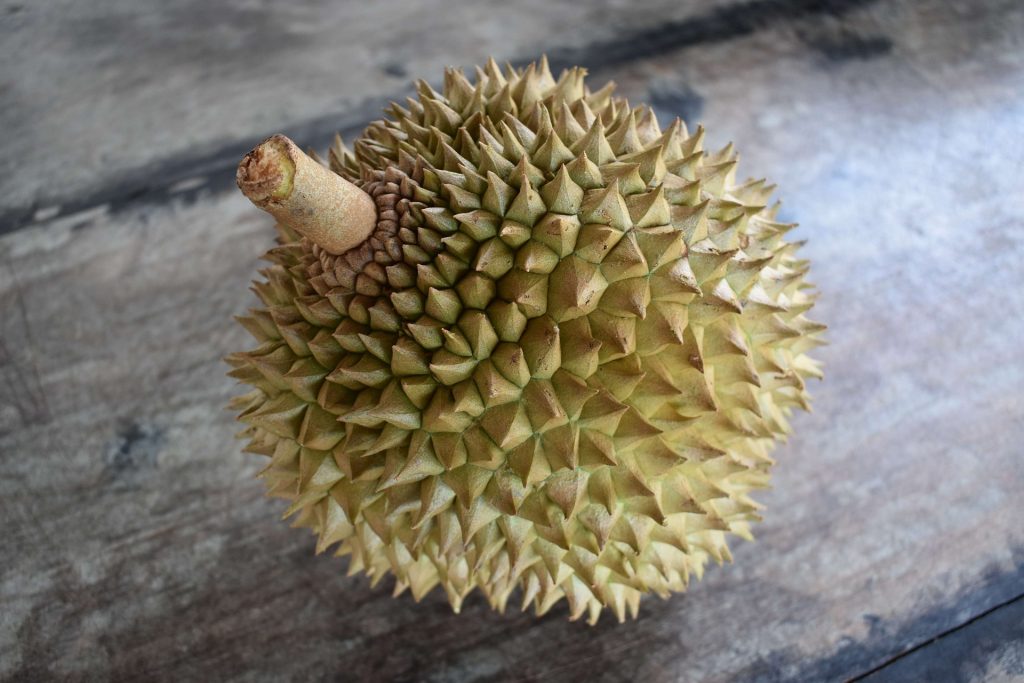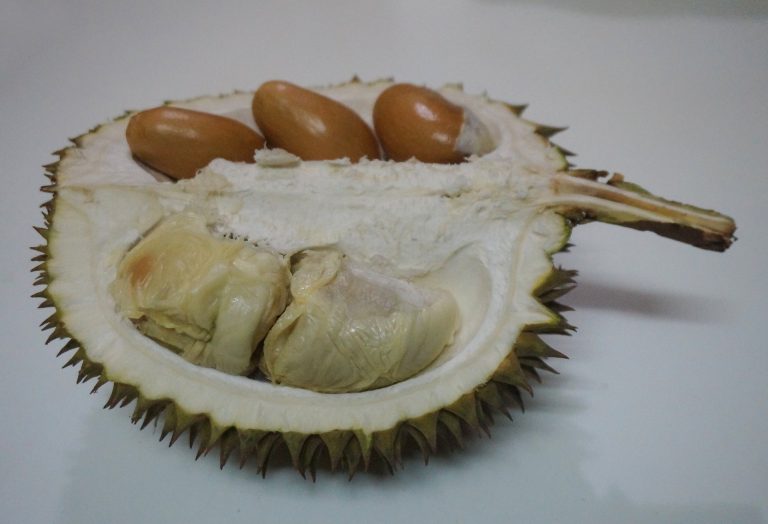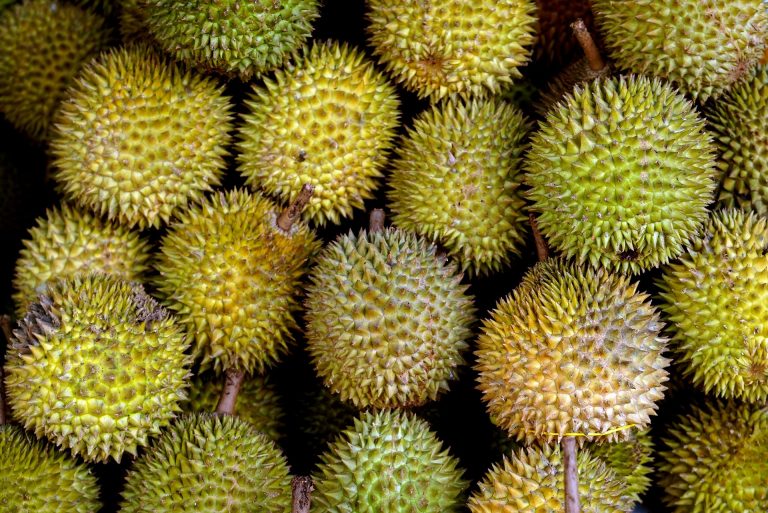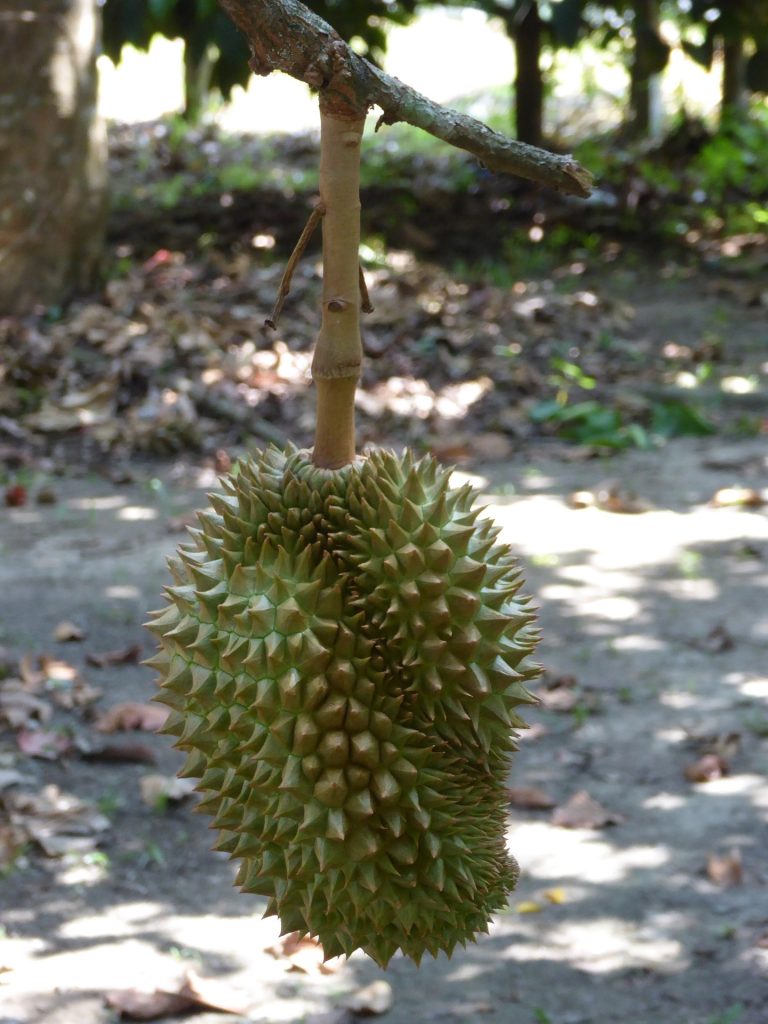Durian: Exploring the Tropical Treasure of Southeast Asia

Introduction: Durian, with its formidable spiky husk and divisive aroma, has long captured the curiosity and fascination of explorers, gourmands, and adventurers. This introduction sets the stage for a deep dive into the multifaceted world of durian, inviting readers to embark on a sensory journey through its origins, characteristics, and cultural significance. From its mythical status in Southeast Asia to its growing presence in global markets, durian remains a culinary enigma and a source of fascination for food enthusiasts worldwide.

Botanical Background: Durian, scientifically classified under the genus Durio, belongs to the Malvaceae family and is native to the rainforests of Southeast Asia. The durian tree is characterized by its tall stature, glossy green leaves, and spiky fruits, which can weigh up to several kilograms each. Durian fruits contain creamy, custard-like flesh encapsulating large seeds, with variations in flavor, aroma, and texture among different cultivars. Understanding the botanical characteristics of durian provides insights into its cultivation, genetic diversity, and potential for breeding new varieties with desirable traits.
Culinary Delights: Despite its polarizing aroma, durian is revered for its rich, complex flavor and creamy texture, making it a prized ingredient in Southeast Asian cuisine. Durian can be enjoyed fresh or incorporated into a variety of sweet and savory dishes, including desserts, pastries, ice creams, candies, and savory snacks. Its versatility in culinary applications reflects its status as a cherished delicacy and a symbol of indulgence and celebration. Durian aficionados savor its unique taste and texture, while newcomers to the fruit often find themselves captivated by its exotic allure.

Durian Cake
Nutritional Value: Beyond its culinary appeal, durian boasts a nutritional profile that rivals that of other tropical fruits. It is rich in essential nutrients, including vitamins C, B-complex, and E, as well as minerals such as potassium, magnesium, and iron. Durian is also a good source of dietary fiber and healthy fats, particularly monounsaturated fats, which contribute to its creamy consistency and satiating properties. Its nutrient density and energy content make durian a valuable addition to the diet, providing sustained energy and supporting overall health and well-being.
Medicinal Properties: Durian has a long history of medicinal use in traditional healing systems throughout Southeast Asia. Various parts of the durian tree, including the fruit, leaves, roots, and bark, are valued for their therapeutic properties, which include anti-inflammatory, antimicrobial, and antioxidant effects. Durian-based remedies have been used to treat a variety of ailments, including fever, cough, indigestion, and skin conditions. While scientific research on durian’s medicinal properties is still in its early stages, anecdotal evidence and traditional knowledge continue to highlight its potential health benefits and pharmacological activities.

Socio-Cultural Significance: Durian holds a special place in the cultural heritage of Southeast Asia, where it is revered as a symbol of abundance, prosperity, and hospitality. The durian fruit is often shared and enjoyed during festive occasions, social gatherings, and family celebrations, fostering a sense of community and cultural identity. Its unique aroma and flavor have inspired a rich tapestry of folklore, traditions, and rituals, reflecting the deep-rooted connections between people, nature, and food. Durian’s growing popularity in global markets has further cemented its status as an iconic tropical fruit with universal appeal.
Economic Importance: The durian industry plays a significant role in the economies of many Southeast Asian countries, providing employment, income, and livelihoods for millions of people involved in cultivation, harvesting, processing, and marketing of durian products. Durian cultivation supports local economies and rural development in remote areas, where smallholder farmers rely on durian as a cash crop. As demand for durian continues to grow in international markets, driven by increasing consumer awareness and globalization, the durian industry offers opportunities for economic growth, trade expansion, and value-added products.

Challenges and Opportunities: Despite its popularity, durian faces various challenges, including pest and disease pressures, climate change, and market volatility. Durian trees are susceptible to fungal diseases, such as durian wilt disease, which can devastate orchards and threaten livelihoods. Climate change, including extreme weather events and shifting rainfall patterns, may also impact durian cultivation and productivity in the future. However, innovative approaches, such as sustainable farming practices, genetic improvement, and value chain development, offer opportunities to address these challenges and ensure the long-term sustainability of the durian industry.
Conclusion: In conclusion, durian emerges as a captivating botanical marvel, culinary treasure, and cultural icon, cherished for its unique attributes and enduring appeal. From its humble origins in the rainforests of Southeast Asia to its global prominence in the culinary world, durian embodies the rich diversity of tropical fruits and the power of food to connect people across cultures and continents. As we continue to explore the complexities of durian, from its botanical diversity to its culinary versatility and cultural significance, we deepen our appreciation for this remarkable fruit and its place in the tapestry of human experience.

